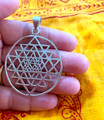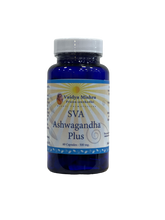 Loading... Please wait...
Loading... Please wait...Categories
- Ashwagandha
- Magnesium
- Preserves
- Turmeric
- Dosha: Pitta
- ASHOKA formulations
- Bath Pouches
- Bone Care
- Chyawanprash
- Souvenirs
- Creams
- Dosha:Vata
- Eyes, Ears, Sinus, Throat
- Face Clay
- Immune
- Dosha:Kapha
- Laundry
- Lentils
- Lip balms
- Liver & Kidneys
- Lotions
- Masalas
- Muscles & Joints
- Oral & Mouth
- Shampoo & Conditioner
- Soaps
- Spray Mists
- Pre Biotics and Probiotics
- Stress & Adrenals
- Dosha:Pitta
- GHEE
- Garcinia
- Protein For Vegans and Vegetarians
- Chutneys & Preserves
- Circulation: Physical and Vibrational
- EVERYTHING ROSE
- Lotions, Creams, & Body Mists
- Shilajit in Formulations
- Thyroid & Adrenals
- Guduchi: Transdermal, Transmucosal, & Oral
- Lotions & Body Creams
- Floral Aromas, Incense, Air Freshener, Body Mist
- Autumn Care
- Ayurvedic Pet Care
- Baby & Children
- Bath, Soaps & Deodorants
- Body Massage Oils
- Cellulite & Skin Care
- Colon Care
- Cooking, Spices, Condiments, & Oils
- DETOX
- Cough & Cold
- Digestion
- ONLINE Courses, Audio, and Printed Materials
- EMF Management
- Emotional Support & Balance
- Eye & Vision
- Fat & Sugar Metabolism
- Gift Baskets
- KICHDI-ON-THE-GO
- Hair Care
- Herbal-Memory Nectars
- Herbal Teas/Coffee Substitutes
- Home (Air Fresheners & Laundry)
- Hormonal Modulation for her & for him
- HP Herbal Nectar Drops
- Immunity & Health
- Individual Herbs & Spices
- Lalita’s Skin & Beauty
- Men’s Health & Shaving
- Mind & Mental Stress Support
- Moringa
- Multi-Minerals
- Oral Care - SVADANTA
- Silver Gift Items
- Sinus Care & Nasya (Nasal) Oils
- Sleep
- Special Needs: Skin & Body
- Stress Management
- Summer Care
- SVA Samadhi with Marma
- Tablets and Capsules
- Transdermal Creams
- Tulsi
- Tridoshic Pain Management
- Vit D, B12, Magnesium, ALA, CoQ10
- Travel Sample Sizes & Starter Kits
- Wild Amla & Chyawanprash
- Winter Care
- Women's Health
New Products
Our Newsletter
- Home
- Tablets and Capsules
- Ashwagandha Plus Capsules
Product Description
According to the ancient Sanskrit texts, ashwagandha is balya, meaning it gives bala (strength). There are many kinds of strength described in Ayurveda (mental, emotional, physical, spiritual, sexual, etc.). In the case of ashwagandha, the bala given is mainly mental, physical and sexual strength.
How does ashwagandha give bala (strength)? One of the main modes of action for this herb is to nourish the majja dhatu (bone marrow and nerves). In Ayurveda, the dhatus (tissues) are formed in a chain of transformation one after the other. Majja dhatu is the second to last dhatu in the chain, so anything that builds majja dhatu is also helping to build all the dhatus. That is why Bhava Mishra says that ashwagandha is kshayapaha (helping with depletion of the tissues), especially if it is stress related depletion. Bala (strength) is the natural result of strong healthy tissues.
Ashwagandha not only nourishes majja dhatu (bone marrow or nerve tissue), but because majja dhatu is the raw material for sukra dhatu (reproductive tissue), ashwagandha also gives a lot of strength to the reproductive tissue. Bhava Mishra describes ashwagandha as atisukrala (creating a lot of quantity of reproductive tissue).
Sukra dhatu, like every dhatu, has two fractions: the sthula bhag (gross fraction) and sukshma bhag (subtle fraction). In sukra dhatu, the sthula bhag is used for reproduction, and the sukshma bhag stays in the chain of transformation and becomes the raw material for ojas (neurotransmitters, neurohormones and immunity). Ashwagandha increases the quantity of both fractions of sukra dhatu. In this way, ashwagandha ultimately helps the body to produce more ojas, and thereby further contributes to the overall bala (strength) of the system.
Learn four other prabhavas (special qualities) of ashwagandha in Vaidya Mishra's 32 minute audio lecture: Ashwagandha - Learn About a Great Herb for Stamina, available for instant download for $0.99. In this lecture you will also learn other important names and physical properties of this famous Ayurvedic herb directly from the Sanskrit texts.
In Ayurveda, ashwagandha is not recommended for people with a pitta physiology, or with lots of amavisha (acidic, reactive toxins) in the body. The reason is that ashwagandha has both an ushna guna (warming physical effect) and ushna virya (deeply heating quantum property, or potency). Pitta people should use these Ashwagandha Plus Tablets or one of the alternative delivery systems listed below. Only vata and kapha people should use Vaidya Mishra's other formula called Total Ashwagandha Tablets.
While the ingredient list is the same for both Total Ashwagandha Tablets and Ashwagandha Plus Tablets, there is much more DGL and Amla (both soma predominant herbs) in the Ashwagandha Plus Tablets. This extra cooling influence of soma helps to balance the ushna guna (heating quality) of ashwagandha.
Use with caution, under the direct supervision of a Shakha Vansya Ayurvedic practitioner, and consult your physician before using.
Ingredients
Ashwagandha, De-glycerized licorice (DGL)
Bottle Size
60 tablets - 500 mg each
Directions
Take as directed by your Shaka Vansya Ayurveda practitioner.
Use under the guidance of a Shaka Vansya Ayurveda practitioner. As with all herbs, please consult with your physician before using.
Ashwagandha is heating. This formulation has more of the cooling, DGL herb than Vaidya Mishra’s other formula, Total Ashwagandha, making it more suitable for the high-pitta physiology. However, even this formula (Ashwagandha Plus) may be too heating for some pitta body types. The safest method of delivering Ashwagandha to the body without heating is to use Ashwagandha Transdermal Cream or Aswagandha Herbal Memory Nectar.
Ashwagandha In Our Other Products
- Get transdermal absorption of ashwagandha while you bathe.
- Only the prabhavas (special qualities) of ashwagandha are delivered; the ushna (heating) quality is not there.
- This is one of our most delicious smelling soaps (the whole bathroom is filled with its aroma).
- Start your day with extra herbal support for mental and physical stamina.
Ashwagandha Herbal Memory Nectar
- Gives just the prabhavas (special qualities) and sukshma bhag (subtle essence) of ashwagandha without its physical (heating) properties.
- Provides a very gentle delivery of this powerful herb.
- Is suspended in the nectar of sweet squashes to balance the warming effect of ashwagandha.
- Should be added to 1 to 2 liters of cool water and sipped throughout the day, also minimizing the ushna (heating) quality of the herb.
- Does not have to go through the digestive, metabolic or liver system which could corrupt the herb's intelligence.
- Is ready to be absorbed and used by the brain and body to help improve stamina against stress.
- Strengthen the mind by delivering the balya prabhava (strengthening quality) of ashwagandha to the brain transdermally (through the skin).
- Receive the benefit of this herb without overwhelming the body with it's ushna guna (heating quality)—important for the high-pitta physiology.
- Bypass the liver and digestive system (if these are weak, or toxic, they can corrupt the herb or prevent it from being fully utilized).
- Enjoy continuous absorption through the skin for several hours (such as when you sleep).
- Very high quality, wildcrafted, herbal supplement
- Good for kapha and vata people, that don't need to worry about the ushna guna (heating quality).
- Gives the physical properties of the herb, which are sometimes necessary.
- Very high quality, wildcrafted, herbal supplement
- Contains DGL (de-glycerized licorice).
- Ok for pitta people, who need the warming quality of ashwagandha to be balanced by the cooling quality of DGL.
- Gives the physical properties of the herb, which are sometimes necessary.
Disclaimer
This product and statements have not been evaluated by the FDA (Food and Drug Administration) and are not intended to be used to diagnose, treat or cure any disease. All of the information above is intended to be used for educational purposes only and may not be used to replace or compliment medical advice.
















